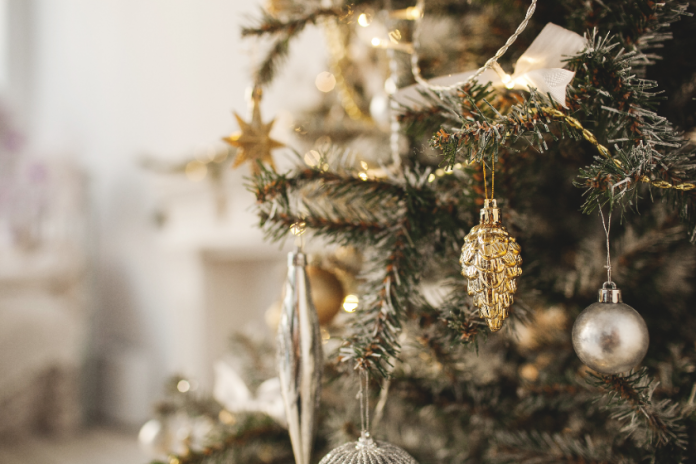
The cherished tradition of placing a live Christmas tree in your home and decorating it with lights, baubles, and popcorn strings is one many families look forward to with anxious anticipation. Some even put up their tree a month or more before the special day so they can relish the joy of the season. In some cases, however, that Christmas tree may be contributing to respiratory problems, termed “Christmas tree syndrome,” that could put a damper on your holiday fun. But take heart! There are natural ways around this bump in the holiday road.
What is Christmas tree syndrome?
Nearly 50 years ago, a Canadian researcher wrote a paper entitled "Christmas Tree Allergy: Mould and Pollen Studies", in which he noted that about 7 percent of individuals with allergies experienced a rise in their symptoms when they had a Christmas tree in their homes. His small sampling of 10 homes uncovered a variety of mold spores and not much credence was attributed to his findings, but the term Christmas tree syndrome was born.
The culprit in this syndrome is mold, whose spores cling to the branches of the trees we put into our homes and offices for the holidays. Statistics concerning mold allergy are not clear. According to one source, approximately 13 percent of people in the United States are affected by mold allergies, while another source notes that among preschool aged kids living in the southern United States, 80 percent showed a reaction to mold spores, house dust mites, or both. In any case, exposure to mold spores raises the potential for at least some people to experience a reaction.
Read about your mind on mold
Nearly 40 years after the Canadian research article, interest in Christmas tree syndrome reappeared. In a study presented at the American College of Allergy, Asthma & Immunology in 2007, Dr. Philip Hemmers reported that mold spore levels on indoor Christmas trees rose more than fivefold during the two weeks associated with the holidays, peaking at 5,000 spores per cubic meter by the end of the festivities, a level that can cause significant symptoms, especially for people with mold allergies, other allergies, or asthma.
The main types of mold found on traditional Christmas trees are Alternaria, Aspergillus, Cladosporium, and Penicillium. Although knowledge of critical spore levels is meager, research indicates that levels as low as 100 spores per cubic meter for Alternaria fall into that category (cause significant symptoms), and that it is 3,000 spores per cubic meter for Cladosporium.
But wait: there’s more. A study that examined 28 Christmas trees uncovered a total of 53 mold species, of which 70 percent were potentially hazardous to one’s health. What’s a Christmas tree lover to do?
Read about 3 tips to get rid of bathroom mold
How to avoid Christmas tree syndrome
If you or your family have experienced the symptoms of Christmas tree syndrome (those associated with hay-fever such as itchy nose, watery eyes, coughing, headache) or you want to help avoid them, here are some tips from the Asthma and Allergy Foundation of America and other experts.
- Lower humidity levels in your home. Indoor humidity levels of 50 percent or higher allow mold to thrive. The optimal humidity level is 35 percent or lower.
- If you must use a humidifier, be sure to clean the fluid reservoir at least two times a week.
- Utilize exhaust fans if possible.
- If you are bothered by mold and visit someone who has a tree, consider wearing a mask (you could decorate it and make it a holiday mask!).
- Use a leaf blower to remove mold spores and pollen from your tree before you bring it inside.
- If you don’t have a leaf blower, you can wash the tree with a hose before bringing it indoors.
- Keep your tree inside the house for as short a time as possible. The longer a tree is indoors, the higher the spore levels will be.
- Buy a self-cut tree. A self-cut tree has not been exposed to higher mold spore levels associated with storage and transportation.
- Use a high-quality air purifier in the same room as the tree.
- Remove other sources of mold and mildew in your home, such as in the bathroom, basement, attic, and kitchen, all of which can contribute to symptoms.
- Consider having an outdoor decorated tree this year.
References
2007 Annual Meeting American College of Allergy, Asthma & Immunology November 814, 2007 Dallas. Annals of Allergy, Asthma & Immunology. 2008 Jan 100(1): SuppA1-A105
Arbes SJ Jr et al. Prevalences of positive skin test responses to 10 common allergens in the US population: results from the third National Health and Nutrition Examination Survey. Journal of Allergy and Clinical Immunology 2005 Aug; 116(2): 377-83
Huang S-W. Mold allergy. Medscape 2017 Sep 18
IQAir. How to avoid Christmas tree syndrome
Kurlandsky LE et al. Identification of mold on seasonal indoor coniferous trees. Annals of Allergy, Asthma & Immunology 2001 Jun; 106(6): 543-44
Twaroch TE et al. Mold allergens in respiratory allergy: from structure to therapy. Allergy Asthma and Immunology Research 2015 May; 7(3): 205-220
Wyse DM, Malloch D. Christmas tree allergy: mould and pollen studies. Canadian Medical Association Journal 1970 Dec 5; 103(12): 1272-76




